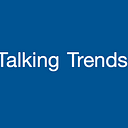Breaking the Paradigm of Clinician-Dependency:Delivering Healthcare Outside of the Clinic- In conversation with Erin Jospe.
“The problems in our current health care system are overwhelming — it’s going to take multiple creative approaches from many different angles in order to make significant headway. Before we start proposing solutions, however, it’s important to take a step back and evaluate: what are the core problems that we’re trying to solve?”
We’re in conversation with Erin Jospe, a curious and empathetic leader in healthcare with over twenty years of clinical experience. Erin is a paradigm shifter for health equity who has been creating a culture of open and honest communication and leveraging digital solutions to inform decisions throughout her career.
Erin, given the current state of healthcare in the United States, there is a growing recognition that a shift is necessary to improve the system and ensure better outcomes. What issues are causing the current shortcomings of the U.S. healthcare system, and what strategies would you propose to address its challenges and disparities? In short, what exactly needs to be changed, and how do you think we should change it?
“A core issue is that it’s so prohibitively costly to be healthy and well- and those costs are paid not just in money, but in time and in energy- so the majority of people already lack the resources to pursue let alone achieve health. The other side of that coin is that, for what you are paying for healthcare, there’s still no consistency in health outcomes. Everyone has the right to an equal opportunity to be healthy and well, so it’s time to think differently about how we can ensure that everyone has equal access to health and wellness care outcomes.
“Not only is it so expensive to be healthy in the current care delivery system, but you must have access to a clinician to be healthy and well — and it is this paradigm of dependency that is profoundly problematic. There are not enough clinical appointments to go around; we lack the appointment inventory to give people the opportunity to be healthy because it is only with an appointment that you can receive education and guidance. Then, if you are lucky enough to get an appointment, you may not have the same guidelines or clinical information offered to you. This perfect storm of insufficient appointment inventory and uneven adherence to best practices further exacerbates health equity gaps.
“Perhaps the time has come to change that paradigm and break the dependency of having a clinician in order to be healthy. Instead, we can creatively envision different ways of giving people access to evidence-based guidelines and care. For example, in the last few years, virtual care has become a new way to give people greater healthcare access — a way to deliver care despite the lack of appointments.
“There are other opportunities to continually reinvent the care delivery mechanisms, whether that’s community-based care coaching, providing learning materials that are culturally competent and accurate, establishing partnerships between retail care, primary care and telemedicine, and let’s not forget the power of basic health education.
“In the United States, the National Health Education Standards have not been updated since 2007, and curricula is dictated at the state level. This lack of standard health education results in significant variability in access to the tools and resources to achieve basic health literacy. This further increases the dependency on a clinical interaction to manage every level of health and well being. Such a dependency denies patients the agency to provide self-care and self-management. In the face of appointment shortages and expensive care, patient-centric education can be a first step to enabling healthier outcomes without access to a physician.”
Thank you for sharing, Erin.
Connect with Erin on LinkedIn.
